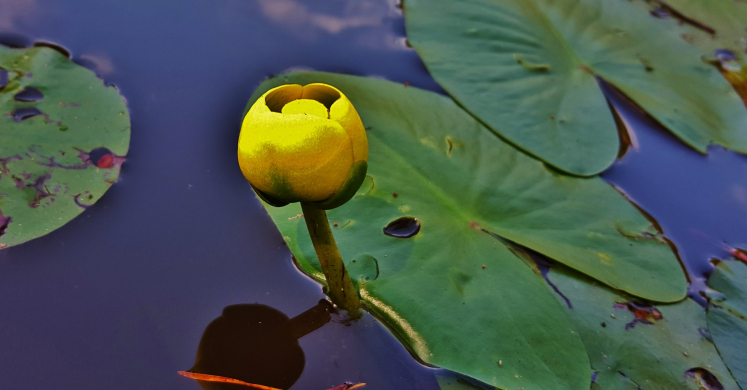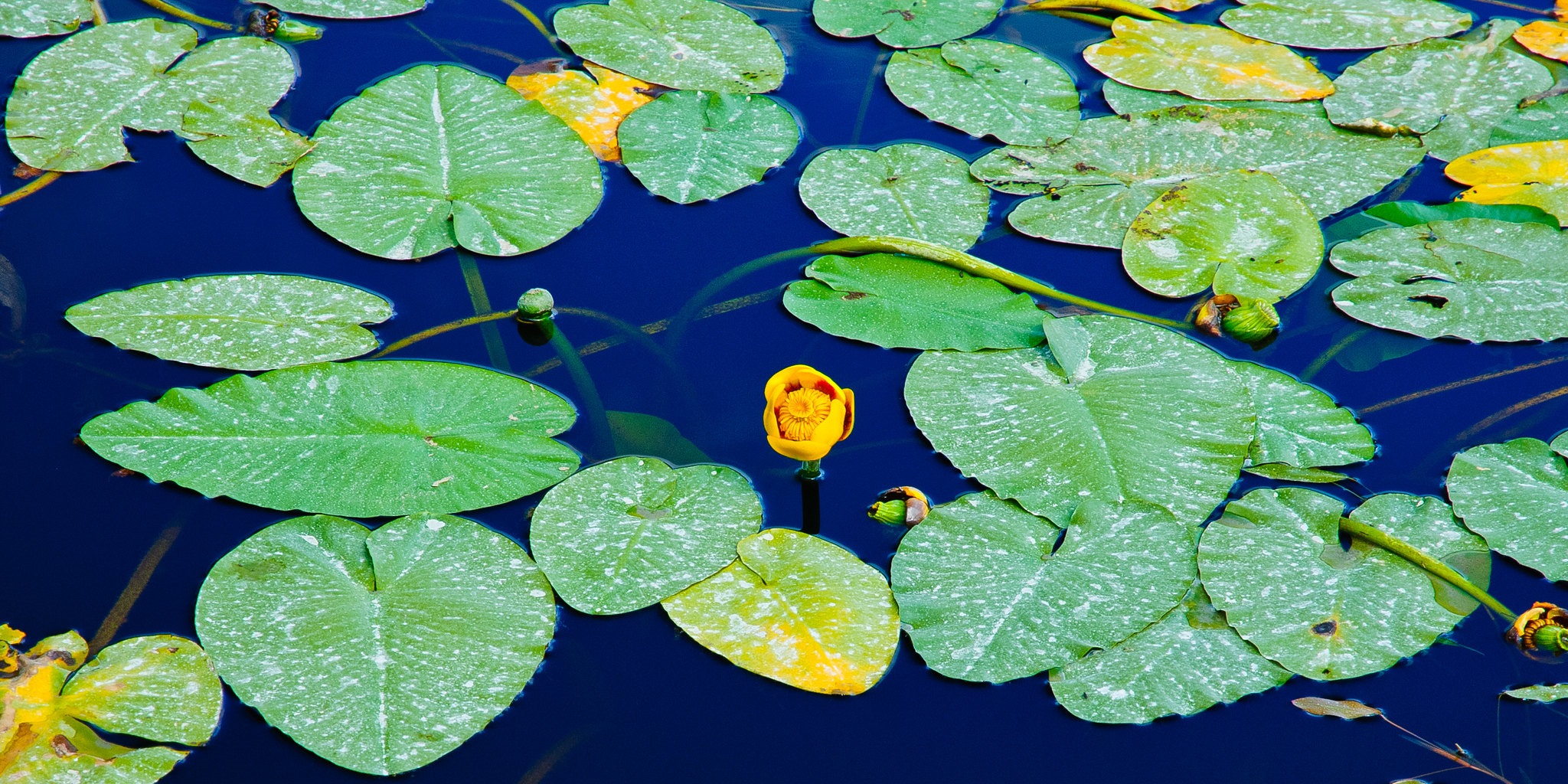Blog

#bioPGH Blog: Yellow Pond Lily
 A resource of Biophilia: Pittsburgh, #bioPGH is a weekly blog and social media series that aims to encourage both children and adults to reconnect with nature and enjoy what each of our distinctive seasons has to offer.
A resource of Biophilia: Pittsburgh, #bioPGH is a weekly blog and social media series that aims to encourage both children and adults to reconnect with nature and enjoy what each of our distinctive seasons has to offer.
Earlier this week, I took a mid-afternoon stroll around the lagoon next to the Center for Sustainable Landscapes and I noticed little pops of yellow dotted amongst the lily pads on the surface of the water. The yellow pond lily is in bloom! Yellow pond lilies look like they were drawn for a fairytale world, the perfect size and shape for a little sprite seat; but while they have a magical allure, their biology is fascinating as well. Let’s take a look!
Yellow pond lily is an aquatic plant with heart-shaped leaves that may either sit on the surface of the water or may continue growing above the surface and stand up out of the water. The stems below these leaves lead to a thick underwater rhizome (modified stem) that the roots extend from. At a quick glance, their blooms almost look like mini tennis balls – small and round with yellow petals. Upon closer inspection, though, the bright yellow pond lilies “petals” aren’t actually petals as we think of them – rather, they have bright yellows “petaloid” and “sepaloid” tepals. On a generalized basic flower model, petals are the colorful structures that make flowers showy and attract pollinators, while sepals are the little leaf-like (usually green) part of the flower that normally wraps around flower buds to protect them and then sits just under a bloomed flower. Tepals are structures that can’t easily be distinguished as either a petal or a sepal; they can be colorful or partly green. Yellow pond lilies do have tiny petals inside the flower, but they aren’t as visible unless the tepals are open.

Yellow pond lily and leaves, National Park Service
Part of why this morphology seems a bit different from our more familiar roses and lilies is that yellow pond lilies are in a group of plants called “basal angiosperms,” meaning they are part of a lineage of plants related to our modern angiosperms (flowering plants), but they diverged down their own evolutionary path a very long time ago. Angiosperms are believed to have first appeared during the Cretaceous period around 100-125 million years ago, alongside such dinosaurs as Utahraptors and Iguanadon (isn’t that one just fun to say?); and basal angiosperms would have diverged early on in that timeline. Thus, they have plenty of time to develop characteristics that are more unique.
Before we close for the week, I will have to admit the trickiest part of researching this post: what is this plant even called? Yellow pond lilies go by many common names, most of which have regional ties: spatterdock (the name I learned), beaver lily, pond poppy, toad lily, frog lily, yellow lanterns, cowlily and many more. On top of that, the scientific name is still somewhat debated as botanists discuss genetics, morphology, and regional variation. For example, the Pennsylvania Natural Heritage Program, a joint venture by multiple state agencies and nonprofits, lists Nuphar advena and Nuphar variegata as our two native species of yellow pond lily, but the USDA lists Nuphar lutea as the native species with advena and variegata noted as subspecies. This reflects series of recent changes going back and forth in scientific literature. Given the confusion, I double-checked with our horticulture team about the name of the yellow pond lily in our lagoon, and we are opting for Nuphar lutea or N. lutea ssp. advena to stay in line with the USDA and other large gardens and botanical research institutions (thank you Laura Schoch and Gary Worthington!) As confusing as the changing names may seem, though, I still love seeing science in action like this. The scientific names are updated as we learn more, so that means, for any of you budding botanists out there, there is still plenty to research and to learn. So never stop all of that exploring!
Connecting to the Outdoors Tip: You can find yellow pond lilies in ponds, lakes, and even gently moving rivers up to sixteen feet deep. We have them across Eastern US, and if you’re an iNaturalist person, don’t forget to add them!
Photo credits: Cover, Matthew Beziat, CC-BY-NC-2.0; Header, Pexels
Resources
Missouri Department of Conservation - Spatterdock
Flora of North America - Nuphar

